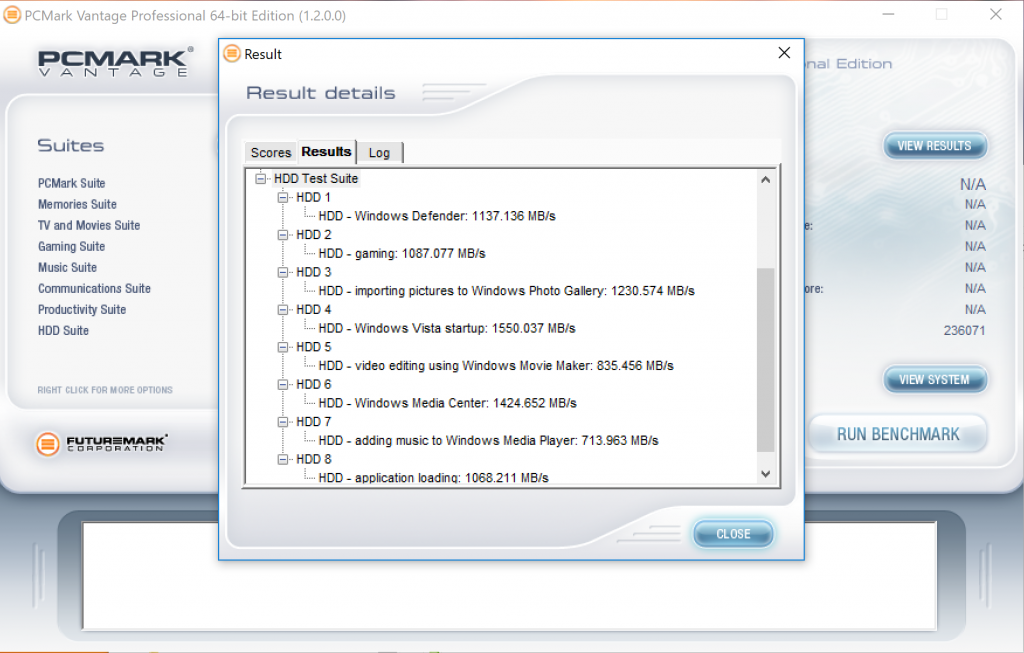The SSD Review uses benchmark software called PCMark Vantage x64 HDD Suite to create testing scenarios that might be used in the typical user experience. There are eight tests in all and the tests performed to record the speed of data movement in MB/s to which they are then given a numerical score after all of the tests are complete. The simulations are as follows:
- Windows Defender In Use
- Streaming Data from storage in games such as Alan Wake which allows for massive worlds and riveting non-stop action
- Importing digital photos into Windows Photo Gallery
- Starting the Vista Operating System
- Home Video editing with Movie Maker which can be very time consuming
- Media Center which can handle video recording, time shifting and streaming from Windows media center to an extender such as XBox
- Cataloging a music library
- Starting applications
Crucial P1 NVMe M.2 1TB SSD RESULTS
PCMark Vantage may be a bit outdated as a test regimen but the Crucial P1 did rather well, unexpectedly pulling in 6 of 8 tests above 1GB/s, which isn’t the norm for most.
TxBench is one of our newly discovered benchmarks that we works much the same as Crystal Diskmark, but with several other features. Advanced load benchmarking can be configured, as well as full drive information and data erasing via secure erase, enhanced secure erase, TRIM and overwriting. Simply click on the title for a free copy.
REAL WORLD FILE TRANSFER
For our Real World File Transfer Comparison of the world’s top M.2 NVMe SSDs, we have included the Samsung 970 Pro, SanDisk Extreme Pro & WD Black 1TB NVMe SSDs, Samsung 970 EVO Plus 1TB and 250GB, Toshiba XG6, Corsair F0rce MP510, Samsung 960 Pro, and HP EX920 1TB, in our testing of the Crucial P1 1TB NVMe SSD. This test is conducted through the transfer of data from one spot on the test drive to another to give us the truest of transfer speed results for that device.
We were actually very surprised by this result, the Crucial P1 did very well and even beat the performance of some premium mainstream SSDs.
The SSD Review uses PCMark 8’s Storage test suite to create testing scenarios that might be used in the typical user experience. With 10 traces recorded from Adobe Creative Suite, Microsoft Office and a selection of popular games, it covers some of the most popular light to heavy workloads. Unlike synthetic storage tests, the PCMark 8 Storage benchmark highlights real-world performance differences between storage devices. After an initial break-in cycle and three rounds of the testing, we are given a file score and bandwidth amount. The higher the score/bandwidth, the better the drive performs.
 The SSD Review The Worlds Dedicated SSD Education and Review Resource |
The SSD Review The Worlds Dedicated SSD Education and Review Resource | 


Other sites, like anandtech, show how the drives performance drops off when the drive is full. This is especially relevant to QLC ssds.
Do you have any intention of creating tests to run a full drive?
Thanks!